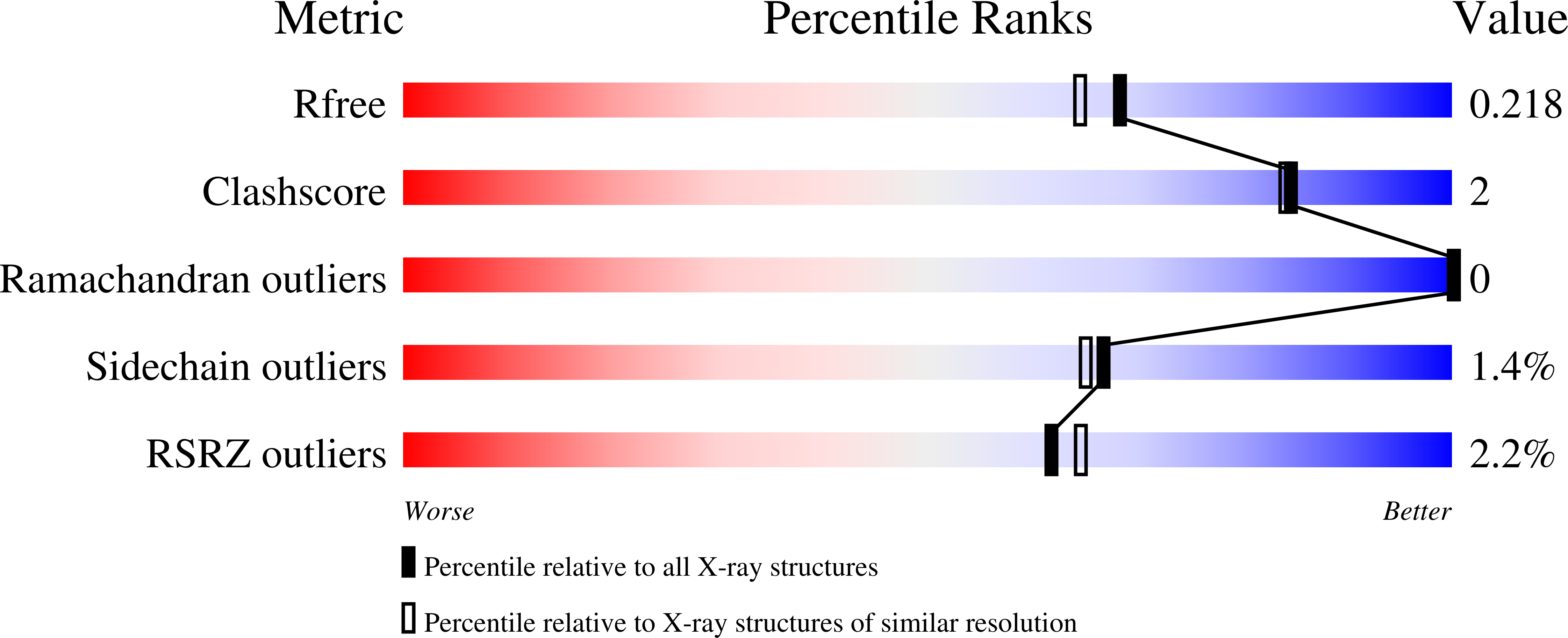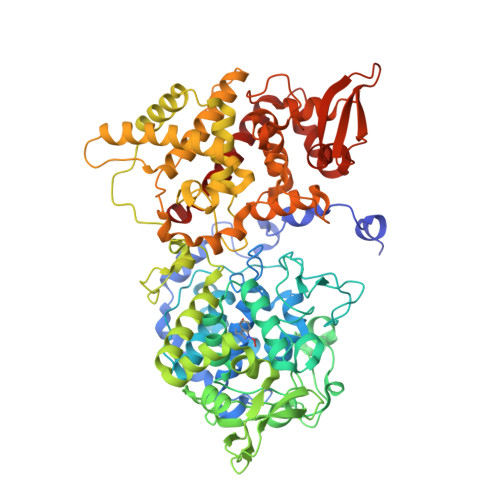Structural characterization of the Ser324Thr variant of the catalase-peroxidase (KatG) from Burkholderia pseudomallei
Deemagarn, T., Carpena, X., Singh, R., Wiseman, B., Fita, I., Loewen, P.C.(2005) J Mol Biol 345: 21-28
- PubMed: 15567407
- DOI: https://doi.org/10.1016/j.jmb.2004.10.020
- Primary Citation of Related Structures:
5L02 - PubMed Abstract:
The Ser315Thr variant of the catalase-peroxidase KatG from Mycobacterium tuberculosis imparts resistance to the pro-drug isonicotinic acid hydrazide (isoniazid) through a failure to convert it to the active drug, isonicotinoyl-NAD. The equivalent variant in KatG from Burkholderia pseudomallei, Ser324Thr, has been constructed, revealing catalase and peroxidase activities that are similar to those of the native enzyme. The other activities of the variant protein, including the NADH oxidase, the isoniazid hydrazinolysis and isonicotinoyl-NAD synthase activities are reduced by 60-70%. The crystal structure of the variant differs from that of the native enzyme in having the methyl group of Thr324 situated in the entrance channel to the heme cavity, in a modified water matrix in the entrance channel and heme cavity, in lacking the putative perhydroxy modification on the heme, in the multiple locations of a few side-chains, and in the presence of an apparent perhydroxy modification on the indole nitrogen atom of the active-site Trp111. The position of the methyl group of Thr324 creates a constriction or narrowing of the channel leading to the heme cavity, providing an explanation for the lower reactivity towards isoniazid and the slower rate of isonicotinoyl-NAD synthesis.
Organizational Affiliation:
Department of Microbiology, University of Manitoba, Winnipeg, MB, Canada R3T 2N2.



















